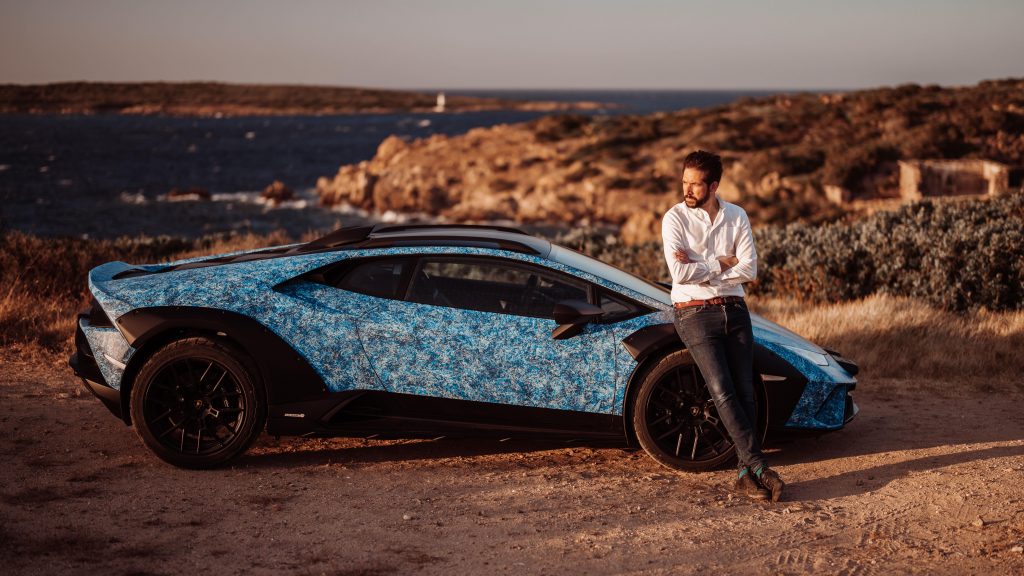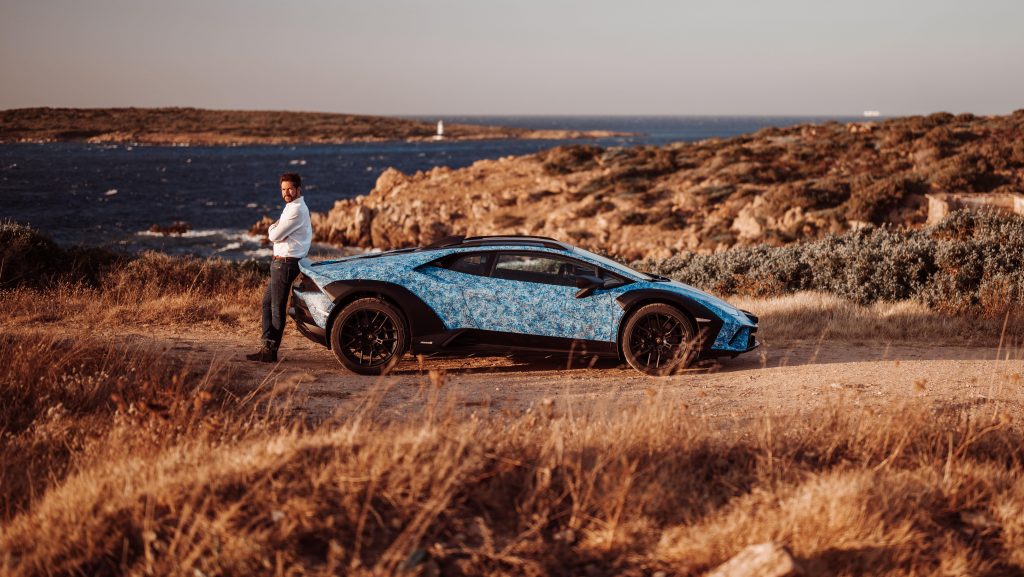Lamborghini’s dedication to design, innovative technology and high performance is well established. But the Italian super sports car manufacturer is constantly exploring the boundaries in another fascinating area: colour. The company recently unveiled the “Opera Unica” Huracán Sterrato, a one-off finished in a unique triple-layer crystal-effect paint specially developed by the ground-breaking Ad Personam department.

The only limit here is arguably the one imposed by the client’s imagination. But how much do we really know about colour itself? For an exclusive new film, Beyond Colour – No Colour Is More Mysterious than Blue, Lamborghini invited world-renowned art historian James Fox to the Italian island of Sardinia, whose famously blue skies and crystal clear waters inspired the paint treatment showcased on the new car. And his insights into humankind’s relationship with colour are extraordinary.

“At its core, colour is a profoundly mysterious phenomenon that raises all kinds of complex philosophical questions that we’ve never been able to answer,” Fox explains. “For a long time, people thought colour was an objective property of objects – that the sky is blue and the trees are green, and so on. And then people started to think, no, it’s not a property of objects, it’s a property of light, it’s part of the wavelengths of light and photons that rattle and bounce around us on the world.”

Few people are better qualified to explain how colour sits at the intersection between nature, art and science than James Fox. The 41-year-old is currently Director of Studies in History of Art at Emanuel College, Cambridge, having graduated from the institution himself in 2002. He later won scholarships to both Harvard and Yale, and now combines academia with a thriving career in the broadcast and print media. He has presented no fewer than 12 documentaries on art and culture for the BBC and CNN, and his most recent book is entitled The World According To Colour: A Cultural History. It was published to great acclaim in 2021.

“We’re beginning to see colour, not as something that lives out there, but lives inside our heads,” he says. “It’s a creation of our brains, of the primal visual cortex at the back of our heads. So we’re increasingly thinking of colour as an over-whelmingly subjective experience. And the really fascinating thing about that is it means that every-one’s colour experience is different. Colour is constantly moving, it’s dynamic. Colour is the fastest thing in the world because it’s transported by the speed of light, and without light there can be no colour.”

As Lamborghini continues to celebrate its 60th anniversary, the company’s pioneering interest in colour continues apace. The “Opera Unica” Huracán Sterrato is the latest and perhaps most dramatic example so far, and features three different blues: Blu Amnis, Blue Grifo, and Blu Fedra. Inside, the seats, door panels and centre console are finished in Blu Delphinus with details in Celeste Phoebe. The result is a car like no other.

“When I saw the Huracan Sterrato for the first time, I was really astonished, because it isn’t just a car, it’s a painting, it’s an artwork,” Fox says. “Every colour is a miracle, a little explosion, a tiny little detonation that only happens when the physical world and the people who see it collide. It’s a combination of science and poetry.”

Lamborghini has demonstrated the potential of colour as a means of imbuing a machine with personality. For this latest one-off, blue might initially seem like a less flamboyant choice. But as Fox explains, it’s a more enigmatic hue than any of us realises.

“All colours are mysteries, but no colour is more mysterious than blue,” he says. “Blue is all around us, but forever out of reach. It’s everywhere and nowhere. When you’re on an island like Sardinia, you see it in all directions. You see the bright blue sky above you, you see the blue sea around you. And yet those blues are not real. They’re optical illusions. The sky is actually black even during the middle of the day. It’s an optical illusion that occurs when sunlight travels through the atmos-phere. The atmospheric molecules scatter the blue wavelengths of light across the sky and make it appear blue to us. And the sea is only blue because it reflects the illusion of blueness in the sky.”

He continues: “Blues generally live in depths, they live in distances, they live in the height of the sky and the distant horizon and the depth of the ocean. They can’t be grasped, they can’t be reached, they can’t be touched. And the other thing to say about blue is that, if you think about it, there are very few blue things in nature. Many, many languages didn’t have a word for blue, because that’s how mysterious and how absent it was from our world. And there are many languages, even today, that still don’t have a word for blue.”

Fittingly, Fox draws a clear parallel between the power of blue and the allure of Lamborghini’s country of origin. “Italy, I think, is the land of blue. It’s the land of the greatest blue pigment of all – ultramarine. It’s the land of the great blue paintings of Giotto and Titian. And it’s a funny thing that, while studies have shown that all around the world blue calms us down, in Italy blue excites people. It gets their heart racing, it raises their blood pressure, it gets the electrical activity in the brain increasing.”

From Santa’Agata to Sardinia’s Costa Smeralda, and right around the world, Lamborghini is com-mitted to going beyond in every realm – including colour. It’s an emotional trigger more powerful than most of us fully appreciate, as James Fox explains in this significant new short film
“Colour is identity. Colour is who we are. And we are colour. Colour is made inside us and it means a great deal to us. And so the colours we choose to wear, the colours we choose to paint our homes in, the colours we choose on our car, all of these things reveal profound insights into who we are. They tell us about our national heritage, our back-ground, our culture, our personal preferences, our family and our deepest aspirations and hopes. Colour is a perfect expression of who we are.”



















